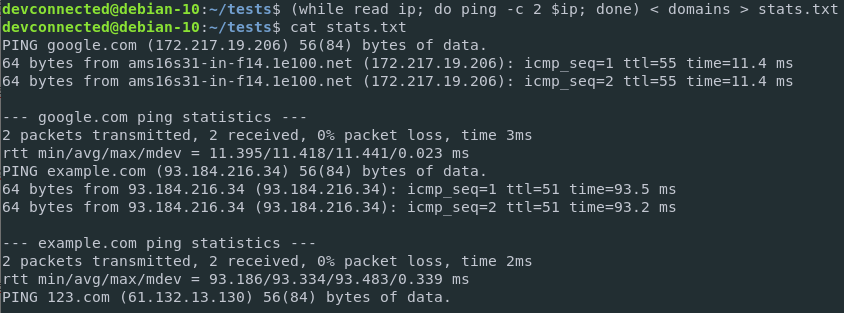Home > Articles
- Cannot Redirect Standard Input From /dev/null
- 2&1 Dev Null
- Script Dev Null
- Standard Input Redirect From Dev Null Computer
- Redirect Standard Out To Dev Null
Cannot Redirect Standard Input From /dev/null
- Objectives
Save 35% off the list price* of the related book or multi-format eBook (EPUB + MOBI + PDF) with discount code ARTICLE.
* See informit.com/terms
Aug 01, 2019 Surely you've heard other talk about stderr or 'Standard Error'. Similarly there is 'stdout' or 'Standard Out'. But what do they mean. What are those numbers and what is redirection? Ever heard of. Mar 17, 2020 Redirection is a feature in Linux such that when executing a command, you can change the standard input/output devices. The basic workflow of any Linux command is that it takes an input and give an output. The standard input (stdin) device is the keyboard. The standard output (stdout) device is the screen. Input/Output Redirection in Unix Most Unix system commands take input (by default) comes from the terminal and the resulting output (stream) is displayed on (or directed to) the monitor.Commands typically get their input from a source referred to as standard input (stdin) and typically display their output to a destination referred to as standard output (stdout) as. In Stevens' UNIX Network Programming, he mentions redirecting stdin, stdout and stderr, which is needed when setting up a daemon. He does it with the following C code /. redirect stdin, stdout, and Stack Overflow. To check that it's open on the current /dev/null file specifically (not /some/chroot/dev/null for instance), on Linux only (where /dev/stdin is implemented as a symlink to the file open on fd 0 instead of a special device which when open acts like a dup(0) in other systems). By default, standard input comes from the keyboard. You can instead pass a file as the input. It will pass along the file and the program won't know the difference that it came from a file instead of from the keyboard. Another option is to use the output of another program as the input. The redirection of stdin for nohup is entirely optional as nohup will usually redirect it to dev/null if it was a terminal, to avoid the terminal not being able to close when you type exit. You can do your own 0dev/null or a file, to avoid this.
This chapter is from the book 2&1 Dev Null
This chapter is from the book
This chapter is from the book

Linux Shell Features
Objectives
After reading this chapter you should be able to:
List special characters and methods of preventing the shell from interpreting these characters
Describe a simple command
Understand command-line syntax and run commands that include options and arguments
Explain how the shell interprets the command line
Redirect output of a command to a file, overwriting the file or appending to it
Redirect input for a command so it comes from a file
Connect commands using a pipeline
Run commands in the background
Use special characters as wildcards to generate filenames
Explain the difference between a stand-alone utility and a shell builtin
This chapter takes a close look at the shell and explains how to use some of its features. It discusses command-line syntax and describes how the shell processes a command line and initiates execution of a program. This chapter also explains how to redirect input to and output from a command, construct pipelines and filters on the command line, and run a command in the background. The final section covers filename expansion and explains how you can use this feature in your everyday work.
Except as noted, everything in this chapter applies to the Bourne Again (bash) and TC (tcsh) Shells. The exact wording of the shell output differs from shell to shell: What the shell you are using displays might differ slightly from what appears in this book. For shell-specific information, refer to Chapters 8 (bash) and 9 (tcsh). Chapter 10 covers writing and executing bash shell scripts.
Related Resources
Script Dev Null
- Book $47.99
- Online Video $159.99
Standard Input Redirect From Dev Null Computer

Redirect Standard Out To Dev Null
- Book $119.00
Comments are closed.